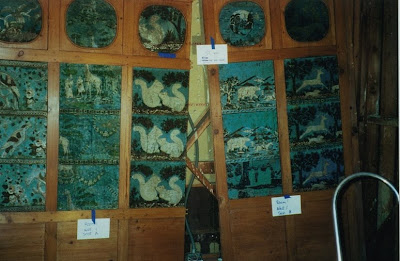I was one of the weird ones. I'll admit it. As soon as July 1st rolled around, I was the first in line to buy all of the my school supplies. I LOVE school supplies and since graduating from college in 2010, I am now experiencing my second period of school supply shopping withdrawal.
Luckily, Shelburne Museum has its very own school house to fulfill my classroom desires.

Built in 1840, this one room school house from Vergennes, Vermont features historic desks as well as replica desks that visitors can sit in to relive 19th century schooling. Chalkboards at the front of the classroom feature lessons typical of the time period.
 Of course my favorite part is the school supplies. Fountain pens, ink wells, and adding machines line the school houses's shelves.
Of course my favorite part is the school supplies. Fountain pens, ink wells, and adding machines line the school houses's shelves.
Next time you visit, make sure to check out the Vergennes School House and take a break in the backyard --Alyssia's Garden!



